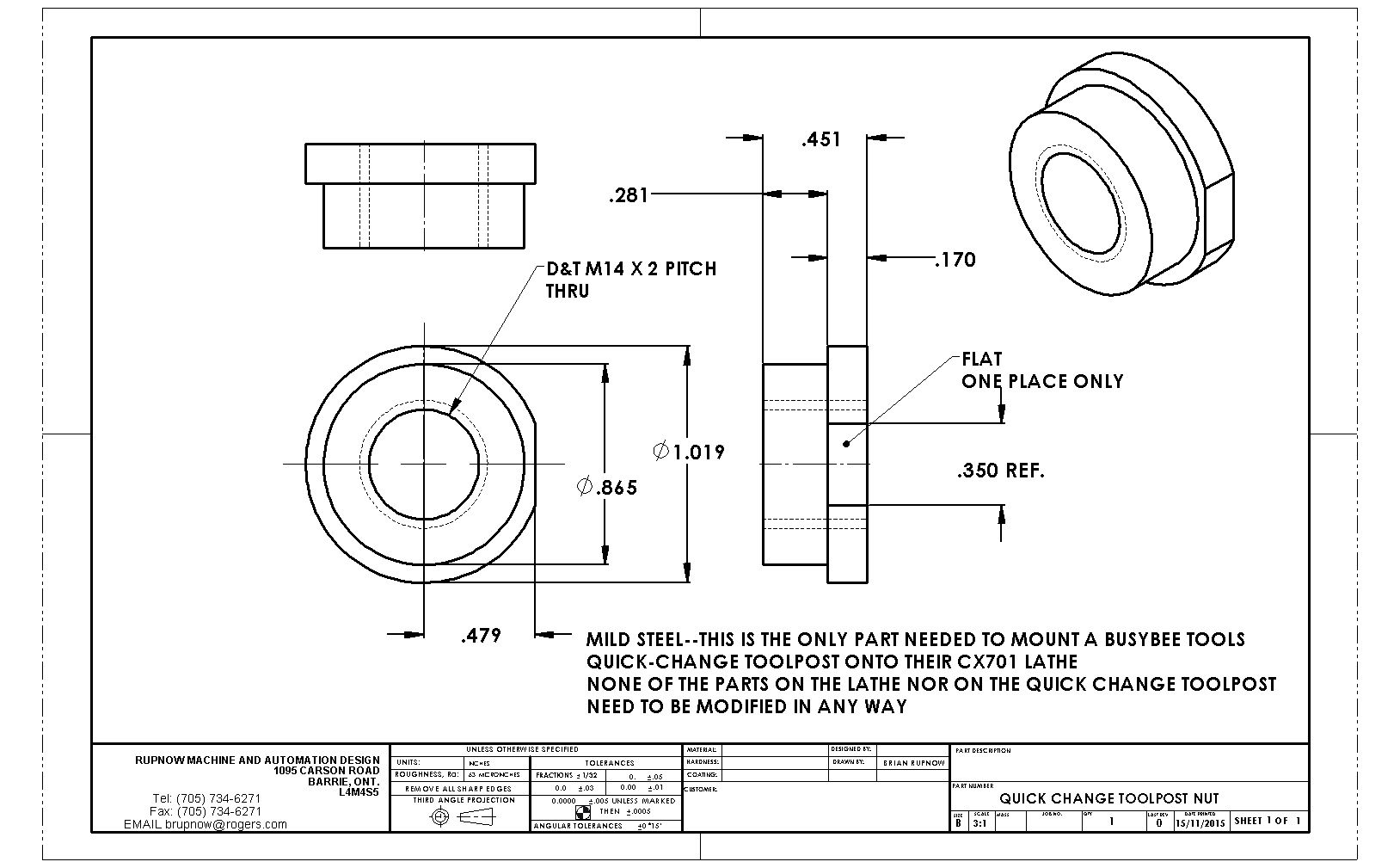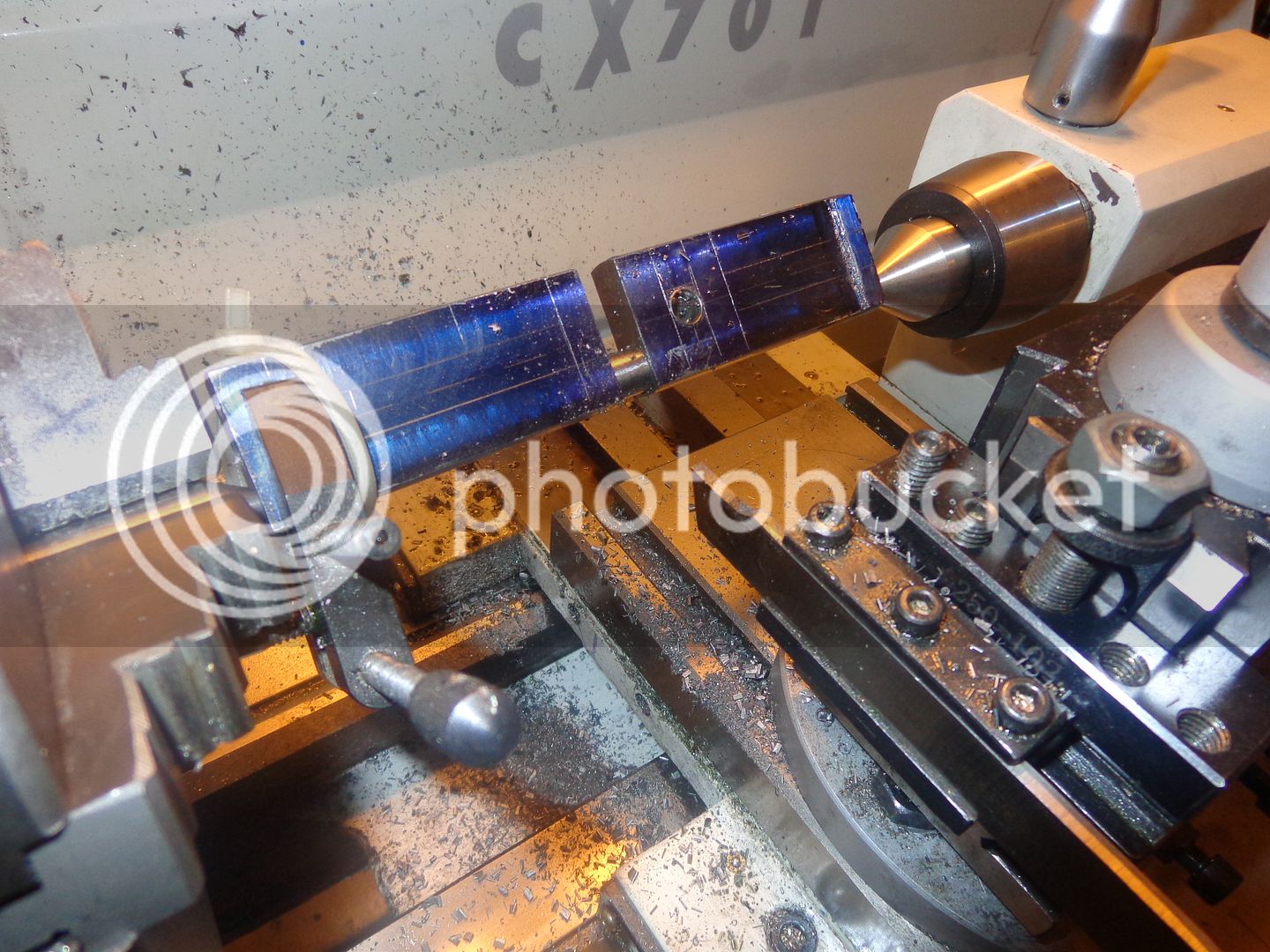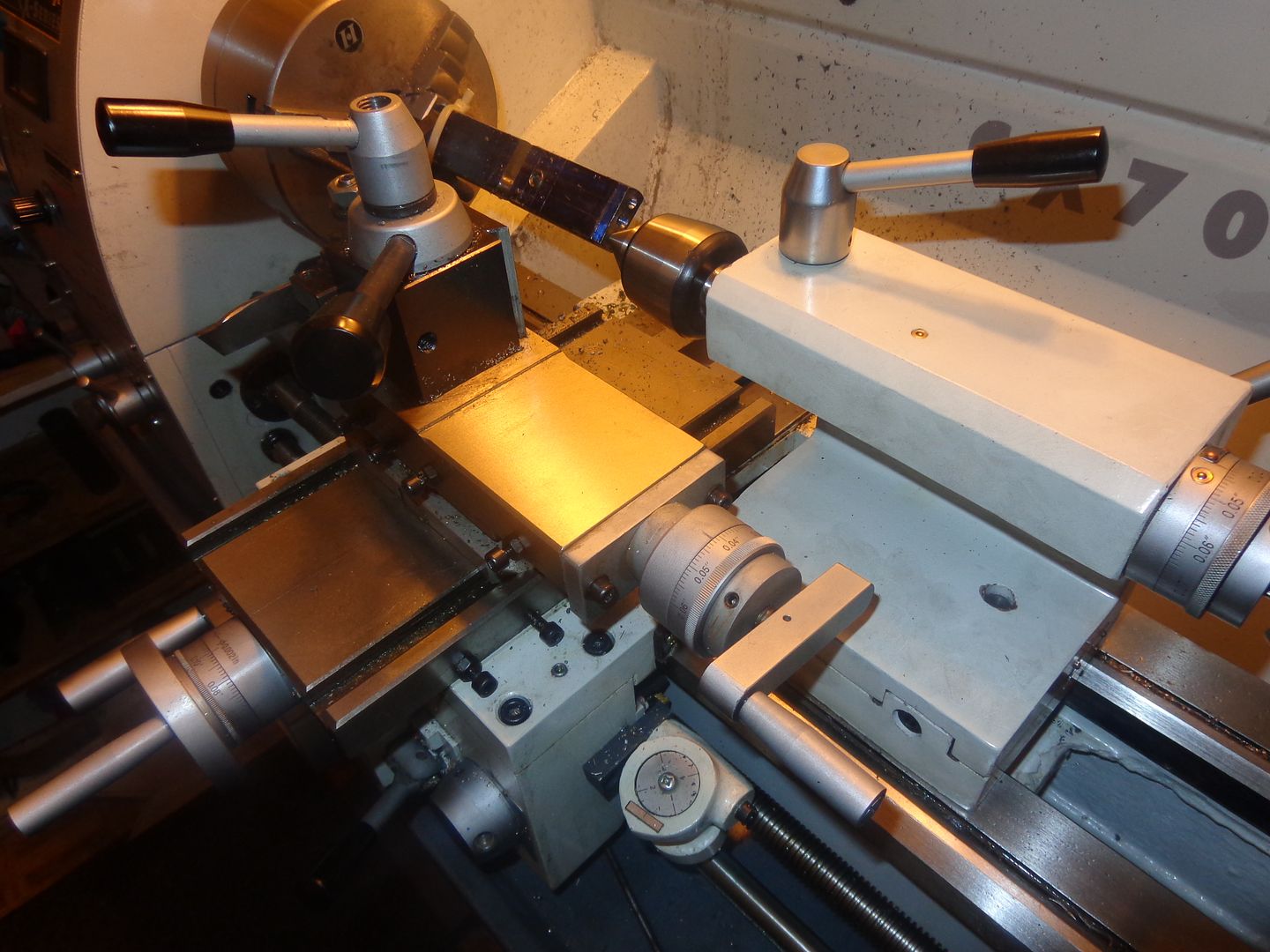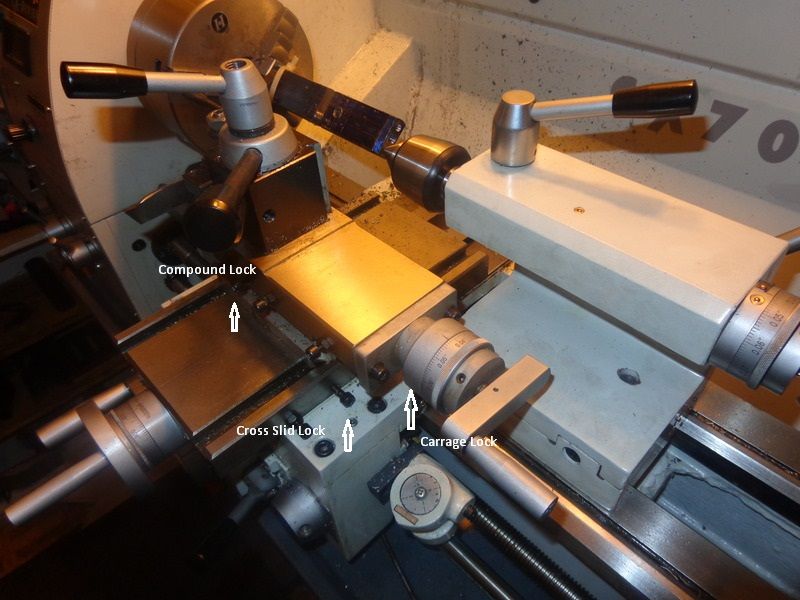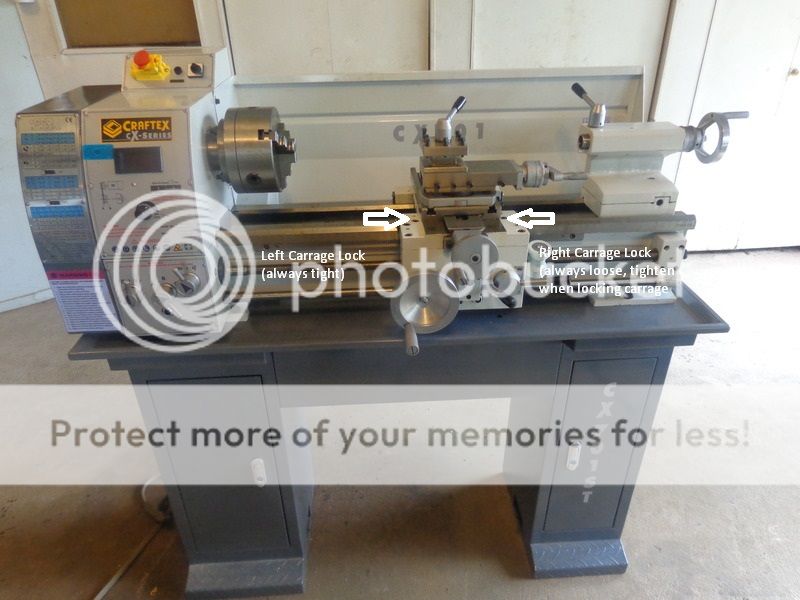Hi Brian,
I had power feed on my old Emco V10P lathe (which I think was about the same size as your Cx701) and I really liked it.
If I wanted to machine up to a shoulder I would set the stop on the lathe bed, engage the power feed and disengage it a mm or so before the carriage hit the stop. I would then use the wheel on the side of the lathe to move the carriage up to the stop.
The only problem is that you need to pay close attention so you don't run the carriage into the stop under power, so you should run a slow power feed rate until you gain confidence in your ability to disengage it in a timely manner.
Hope this helps as power feeding is a great advantage.
Regards,
Alan C.
I had power feed on my old Emco V10P lathe (which I think was about the same size as your Cx701) and I really liked it.
If I wanted to machine up to a shoulder I would set the stop on the lathe bed, engage the power feed and disengage it a mm or so before the carriage hit the stop. I would then use the wheel on the side of the lathe to move the carriage up to the stop.
The only problem is that you need to pay close attention so you don't run the carriage into the stop under power, so you should run a slow power feed rate until you gain confidence in your ability to disengage it in a timely manner.
Hope this helps as power feeding is a great advantage.
Regards,
Alan C.





